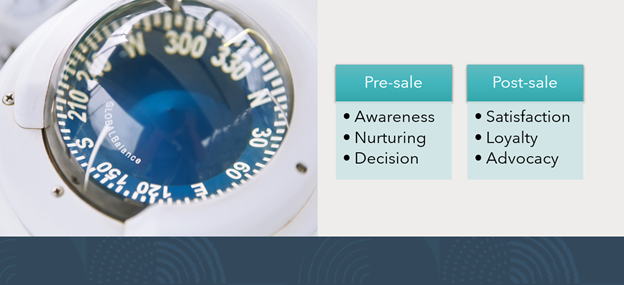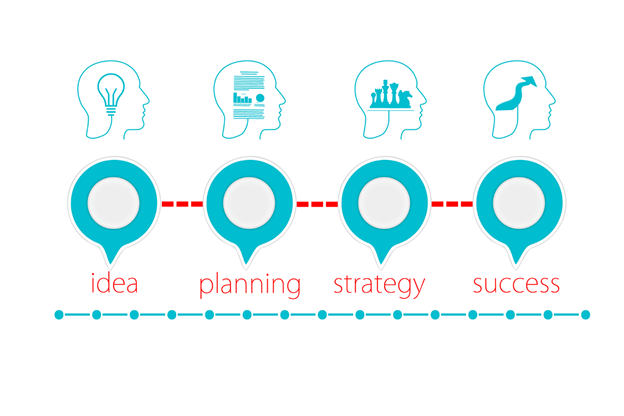
Businesses that provide an excellent customer experience (CX) have better sales and brand loyalty. However, how do businesses know the state of their CX?
Often, companies rely on opinions and guesswork to identify customer pain points. This subjective data can be misleading, outdated, or anecdotal. The lack of hard data can lead to continually bad customer service. Instead, businesses should gather data from different sources to determine their CX.
The collection of this data should be formalized in a CX audit. These audits will help you identify any pain points for your customers. According to Dimension Data’s 2017 Global Customer Experience (CX) Benchmarking report, 71 percent of organizations cited CX as a competitive differentiator. However, only 13 percent of brands rated their CX delivery a nine or better.
Regular audits will help you improve your customer experience delivery and improve your CX rating. You will be able to see all aspects of your customer experience in a holistic and impartial way. The audit will help your business:
- Better understand customer needs
- Gain actionable steps to improve your CX
- Increase customer satisfaction
- Build customer trust
- Increase profit and revenue
This article will explain the steps of the CX audit. By working through these steps, your business can improve service quality, which will lead to the benefits listed above. An audit will determine customers’ perceptions of your brand and what that means for your business. After this, you can make the changes so perception lines up with your company’s vision and goals.
Formally Document Customer Lifecycle
First, you need to get an outline for your customer lifecycle. Customers can be broadly broken down into two groups: pre-sale and post-sale. Each group has different roles and needs within your business.
Understand where customers interact with you before they purchase goods or services from your company. Document your outreach strategy and determine if it is working. Does this strategy lead to sales? Are customers satisfied with this experience?

As well as the overarching stages, there are different points within each group you should pay particular attention to. In pre-sale, these points are at the awareness, nurturing, and decision phases. The post-sale points are satisfaction, loyalty, and advocacy. If you understand how people move through these points in the customer lifecycle, you can identify any problems you may have.
There are different places customers and leads interact with your company. You need to identify these touchpoints across the lifecycle. It may be helpful to start with the two basic groups. Then, investigate how customers progress through each step from awareness to advocacy. Afterward, you will know if you are converting leads into customers. You will also make sure you retain those customers and turn them into brand advocates.
Make sure you document all the touchpoints. This includes social media, trade shows, trial offers and products, email, and direct mail. Then you should gauge the influence of each touchpoint. Determine if each are effective and provide an excellent customer experience.
Look at the Tech

Then, you need to compare your technology with your business functions. Determine if your digital platforms support your business. Does your technology work to improve your CX? If it doesn’t, then you can expand and adapt to fit market demands and provide a positive experience for your customers. You may find that you need to re-evaluate technology’s role in serving your customers.
Also, investigate whether your tech sits in silos. Customers want a seamless transition between their digital and physical worlds. Communication about customer initiatives should flow freely from department to department. Here are some things to look at:
- Are you capturing continuous customer feedback and opinions over multiple channels?
- Are you using the best ecommerce platform for your brand?
- Do you have the tools necessary to meet customer expectations?
- Can you provide quick responses across all your digital and physical platforms?
- Does your tech give you a complete view of your customers?
Communication is vital to business success. One way to ensure your customers can reach you is through business call forwarding. This will help the flow of communication by making sure calls get to the right person or department. Making sure you have effective telecommunications will save your customers time and frustration and improve your CX.
Audit your C-Suite

After looking at your technology, turn your eye to your business. It will determine if every aspect of your company has the same vision. Ask your leaders what they want the outcome of CX to be. Everyone should have the same definitions of customer experience. They may have different perspectives, but it should all lead to the same goals.
Your C-Suite should look at your retail sales channels and how they are working. Do you have more than one channel? Are those channels working together or is there a disconnect? Your C-Suite consists of the people managing your operation. Therefore, it is vital that they have a clear vision for your CX.
From the upper levels, you can identify any problems that will increase as they work down your business. Having your C-Suite on the same page will provide consistency to your employees and your customers. This will lead to a better customer experience and better service overall.
Explore Your Employee Data Goldmine

Nobody knows your CX better than your employees. They can determine if your customer experience is driving business growth or hampering your success. Complete internal surveys on a regular basis to keep up-to-date data.
This will make sure your CX program reaches every aspect of your business. Take the opportunity to make sure that each employee understands their role. Gauge their dedication in providing excellent customer service.
In the survey, make sure you investigate both positive and negative experiences. This includes the experiences of the customer and on the employee side. Happy employees provide better customer service. If you have a call center, you can determine if you are using the best call center software for your business, for instance.
Making sure that your employees are satisfied with their job is an important part of your CX audit. Businesses who make sure their employees are included in their vision will have better CX strategies and outcomes.
Some questions you should ask are:
- Do we demonstrate that we have the best interests of our customers in mind?
- Do we listen to our customers and understand their needs?
- How is our communication within our company?
- Are you proud to work for the company?
- In a given day, is it easy to meet customer expectations?
- Do you have the freedom you need to fix customer issues and make them happy?
- Do you get praise and recognition for the great work you do?
After you get feedback from your employees, evaluate the results. Investigate if there is anything you can do to improve employee satisfaction. For example, if your employees are stressed about the volume of calls they receive, make changes. You can utilize an auto attendant phone system to make your employees’ day easier. It will also improve your customer service because of increased efficiency.
Take Action

Throughout your audit, ask yourself what the next steps should be. Each phase of the audit should identify different areas of improvement. It should also bring to light where you are succeeding. The strategies that work in one area of your business may be able to be placed in other departments. What departments have implemented exemplary customer service skills?
Some changes may be easier to make than others. Develop strategies to implement these changes and monitor their progress. Also, make sure to do continued audits. If your business is constantly evolving to meet customer needs and market demands, you need to consistently monitor your CX. Make sure that you check in with employees regularly to see if they are satisfied with new policies and procedures.
If you discover that you need to make big changes to your CX strategy, it may be useful to do this in stages. This way, you will be able to provide the training necessary for a smooth transition, and customer service will not suffer as you attempt to improve your CX.
In terms of technology, make sure to stay ahead of the problems. In each audit, ask yourself if your company is staying ahead of the curve. For example, if you make a lot of calls, predictive dialers can assist your employees and improve productivity. You can empower your agents so that they can do their jobs with greater confidence.
Success relies on your ability to use CX audits and implement their results. Doing regular audits improves your customer service. Utilize all the data from your audit. Ask employees and your C-Suite if they have any suggestions to improve your CX. Plan and strategize how you will implement these changes.
Constantly monitoring your CX and completing regular audits will drastically improve your customer experience. Frame the audits and the strategies for improvement around the customer lifecycle. This will lead to improved sales and customer retention.






